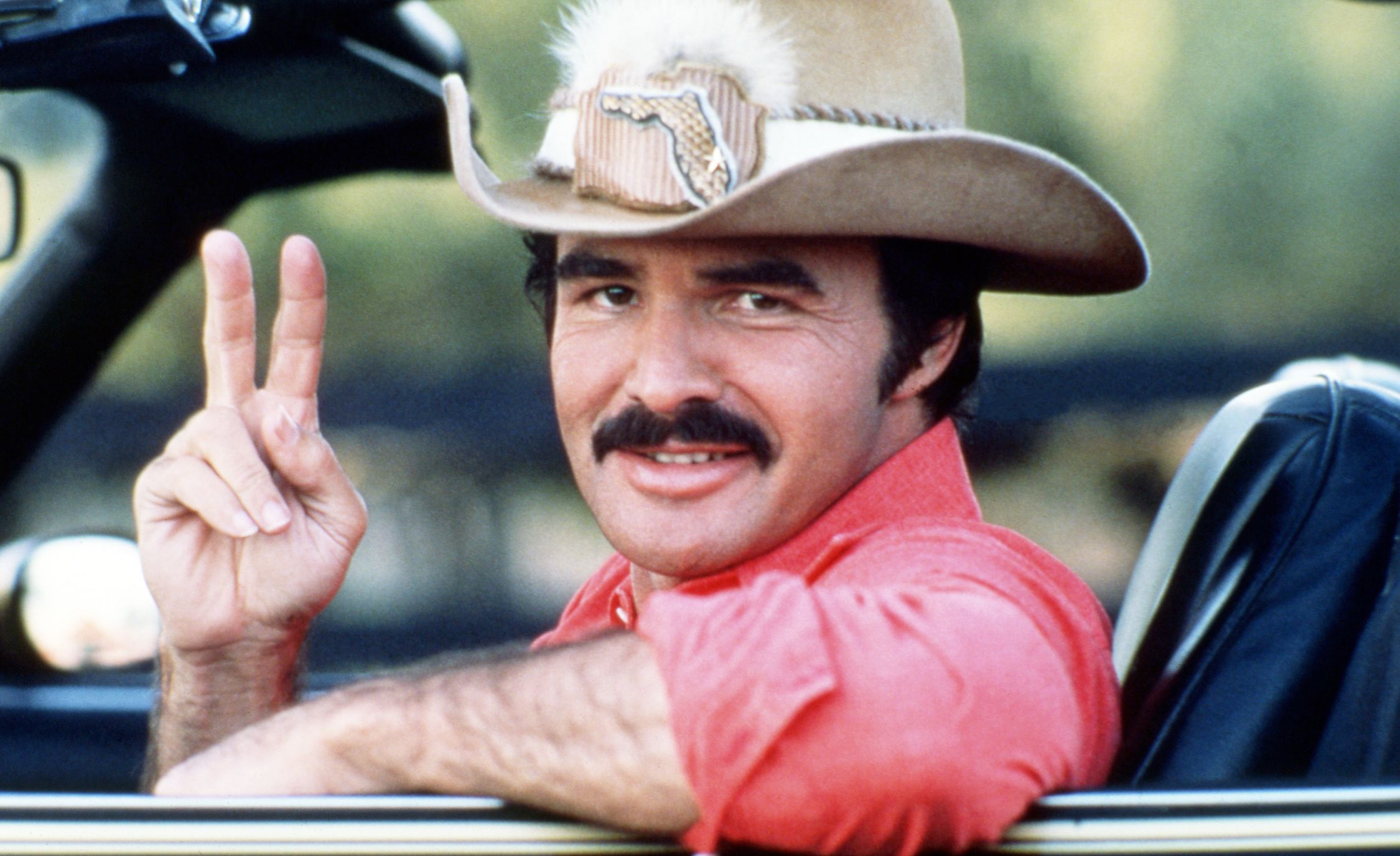As his career soared, Burt Reynolds created a new niche.
“He was a hero to the South,” director Adam Rifkin says in “I Am Burt Reynolds,” which airs at 8 p.m. ET Saturday (Dec. 30) on CW, launching a series of biographical movies. He was the perfect “sweaty, stout tough guy.”
It’s a regional-rogue image he molded through three “Smokey and the Bandit” films (shown here) and others, from “Gator” to “The Longest Yard” and “Best Little Whorehouse in Texas.” And it persisted despite a quirk: Reynolds was a native Northerner who didn’t move South (to Florida) until he was 10.
His older sister didn’t take that move well. She woke up in the car after a thunderstorm, Reynolds wrote in his autobiography, and “seeing the steam, along with the heat and humidity, said, ‘Dear God, I’m in Hell.’”
That was never his view, he wrote.”For me, it would always be paradise.”
The South became entwined in his identity. The film doesn’t mention his cold-weather roots; official accounts often listed him as being born in Waycross, Ga. The truth was 1,011 miles to the north.
Both of his parents grew up on Michigan farms, Reynolds wrote in “My Life” (Hyperion, 1994). His dad worked in a Lansing factory when he met a co-worker’s sister, a nurse. They married and their son was born in their Lansing home.
When the dad was stationed in Missouri (Fort Leonard Wood), the family moved there; when he went overseas, they retreated to Lansing, then up North, then back to Lansing. At 10, Reynolds finally moved South. In Jupiter, Fla., his dad supervised homebuilding and then became the police chief; Burt, the film says, focused on two things.
There were girls (“he was very possessive,” former girlfriend Ann Scurry says) and football. “It took two, three guys to bring him down,” recalls a friend, Mo Mustaine.
The two interests apparently merged. Reynolds was set to go to Miami on a football scholarship, the film says, when he visited Florida State University and saw the high female-to-male ratio. He switched to FSU and saw a decent amount of action his freshman year — 134 yards on just 16 carries, ESPN says, with two touchdowns.
But early in the next season, he was injured in a game and then in a car accident. “When I got hurt, my world was shattered,” he says in a clip in the film.
Another clip shows him taking a lightr approach. “I thought: ‘Well, I’m going to have
to, unfortunately, get an education.’”
That was at a junior college, where he studied acting, was spotted by a talent scout and taken to New York. He was a bouncer, a dockworker, a restaurant worker and an actor.
The peak was impressive. Reynolds was the No. 1 box-office star for five straight years, the film says; in Florida, he had a 144-acre ranch, 128 horses, a plane, a helicopter and lots of cars and employees. He also had a dinner theater and gave millions to FSU.
It was a lavish life. “Burt produced our entire wedding,” Loni Anderson says in the film. He even had the church built at the grounds.
It was a life he got carried away with, Rifkin said. “He said, ‘If I met you between 1973 and 1989, I’m sorry.’”
For all the accomplishments, he apparently strained for approval from his father.
“At six feet three-and-a-half inches, (he) was the argest man I’d ever seen,” Reynolds wrote, adding: “This man had a presence my friend John Wayne would have envied.”
Reynold rarely sensed full approval from his parents – “our family was sparing with words” – but kept trying.
He “was burdened with not only physical, but emotional” pain, his friend Jon Voight says in the film. The physical pain kept growing – the cumulative effect of football injuries, the car accident, his early work as a stuntman and a later, on-set injury.
There were rumors that Reynolds,, in his 50s, was dying. Instead, he bounced back.
He was 61 when he did “Boogie Nights,” getting his only Oscar nomination, 81 when he did Rifkin’s “The Last Movie Star” (2017), with lots of work in between. He died the next year, one of the last movie stars and one of the great Southerners … despite having spent his first decade up North.

Reynolds: a Northerner who became the South’s hero
As his career soared, Burt Reynolds created a new niche.
“He was a hero to the South,” director Adam Rifkin says in “I Am Burt Reynolds,” which airs at 8 p.m. ET Saturday (Dec. 30) on CW, launching a series of biographical movies. He was the perfect “sweaty, stout tough guy.”
It’s a regional-rogue image he molded through three “Smokey and the Bandit” films (shown here) and others, from “Gator” to “The Longest Yard” and “Best Little Whorehouse in Texas.” And it persisted despite a quirk: Reynolds was a native Northerner who didn’t move South (to Florida) until he was 10. Read more…